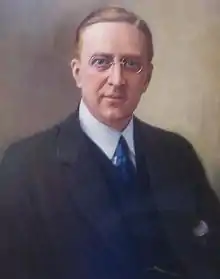Great Vermont Flood of 1927
The Great Vermont Flood of 1927 was a major flooding event in Vermont which occurred November 2–4, 1927. Following a very wet October, record levels of rainfall were reached in November. The U.S. Geological Survey estimated 53% of the state received more than six inches of rain,[1] with the greatest recorded amount being 9.86 inches in Somerset, Vermont, which caused rivers throughout the state to flood.[2] The flood is considered the worst flood in Vermont, with the only comparison being the 2011 Hurricane Irene.[2][3]

The flood destroyed 1285 bridges, killed at least 84 people, and destroyed many buildings and much infrastructure.[2] Environmental historians attribute a number of possible causes for the extreme flooding, including deforestation, saturation of the soil, and the lack of living greenery because of the fall season.[2]
See also
- Great Mississippi Flood of 1927
- The Whisperer in Darkness, a novella by H. P. Lovecraft, begins with the Great Vermont Flood initiating the story's plot
References
- "Flashback Photo: The Great Vermont Flood of 1927 - New England Historical Society". www.newenglandhistoricalsociety.com. Retrieved 2016-12-30.
- Hilke, Jens. "About The 1927 Flood". Landscapes Change Program. University of Vermont. Retrieved 2016-12-30.
- "Flood of 1927". Vermont History Explorer. Vermont Historical Society. Retrieved December 30, 2016.
Further reading
- Clifford, Deborah Pickman; Clifford, Nicholas Rowland (2007-01-01). "The Troubled Roar of the Waters": Vermont in Flood and Recovery, 1927-1931. UPNE. ISBN 9781584656548.